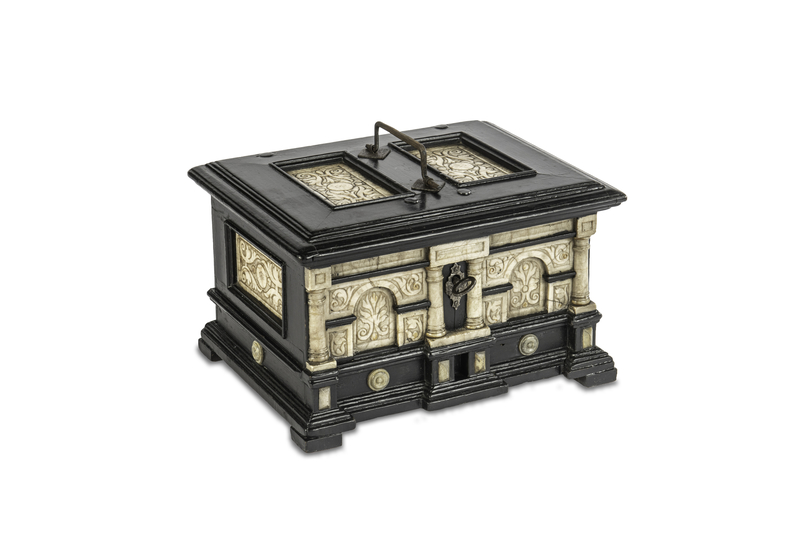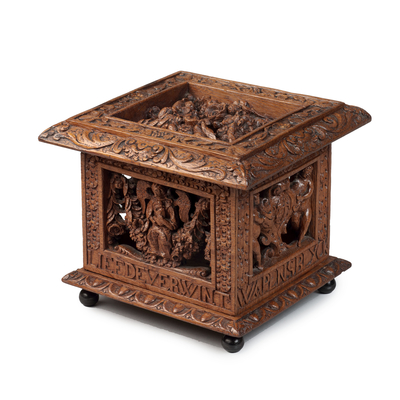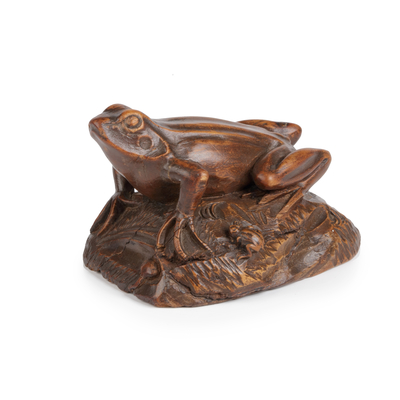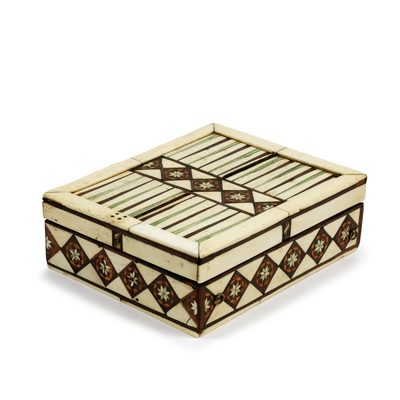Malines casket
Global shipping available
- Origin
- Malines
- Period
- Early 17th century
- Material
- Ebonised pear wood, Painted paper, Iron mountings, Alabaster
- Height
- 14.5 cm
- Width
- 24.5 cm
- Depth
- 18 cm
- Literature
Ewald Berger, Prunk-Kassetten: Europäischen Meisterwerke aus acht Jahrhunderten / Ornamental Caskets: Eight Centuries of European Craftsmanship, Hanns Schell Collection, Stuttgart/Graz 1998, p. 235.
A. Lipinska, ‘Alabastrum, id est, corpus hominis. Alabaster in the Low Countries, a cultural history’, in A.S. Lehmann, F. Scholten & H.P. Chapman (ed.), Netherlands Yearbook for History of Art 62: Meaning in materials, Leiden 2013, pp. 84-115.
Questions about this object?
Please use one of the contact options below:
Description
This extraordinary chest is made of blackened pear wood and decorated with Malines alabaster. Next to the central keyhole are two alabaster arcades, with arabesque motifs. In the center of the arches are two black ornaments, shaped like coats of arms. Perhaps the family crest of the owner would be painted upon these pieces. The arches are flanked by four Doric semi-columns, on pedestals. The semi-columns and arches rest on a stepped base of blackened pear wood, decorated with rosettes. The sides, top, and back of the casket are decorated with alabaster plaques with the same arabesque motif as on the front.
The materials and decorations of this box reflected its valuable content: it was probably used to store jewelry and important documents. These could be safely stored in the double bottom of the chest, or in the small drawers that appear when the side panels are lifted. The inside of the chest, and the secret compartments, are covered with beautiful blue painted paper with a marble motif. In case of an emergency, the box could easily be taken by the handle on top. The box could be closed with a lock.
This box, decorated with alabaster, is characteristic of the early modern arts and crafts in Mechelen. Between the 1560s and 1630s, the city was one of the most important European centers for the manufacture of alabaster objects. It was no coincidence that the Malines alabaster became famous. Alabaster cutters and woodcarvers were united in the same guild (alabaster is a soft stone that is processed in a similar way to wood), which meant that a great deal of knowledge and experience was shared. This tradition of alabaster carving was revived when the Court of Margaret of Austria settled in Mechelen and it effectively became the capital of Burgundy. The demand for richly decorated works of art increased, and the artistic circles around the Court provided new impulses and ideas. Mechelen’s excellent trade network ensured the distribution of art and utensils made of Malines alabaster throughout northwest Europe.
Similar casket in the collection of Charlotte Park, Warwickshire, inv.no. NT 534 190







